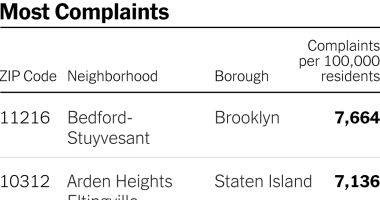
In business, one plus one should equal three. So why are venture capitalists pouring billions into rapid-food-delivery startups that yield negative numbers?
Like so many investors these days, they are after the pot of gold at the end of the rainbow. DoorDash pegs the addressable market in convenience at $200 billion to $250 billion and grocery at $800 billion to $1 trillion, according to a December report by Gordon Haskett. Buyk, a rapid-grocery-delivery startup, has said its addressable market is $500 billion in just the U.S.
Coresight Research estimates the quick-commerce space generated roughly $20 billion to $25 billion in U.S. retail sales last year, including services from companies like DoorDash, Instacart and Uber Eats. Gopuff, the largest rapid-delivery startup, was valued at $15 billion as of July, and is said to be considering a public offering as early as this year. Investors are betting the convenience of having goods delivered during the pandemic will stick even after we settle into a new normal. The question is whether the economics necessary to support the promise of rapid delivery will ever bring sustainable returns.
The history of rapid delivery has itself been fast and furious, accelerated by the pandemic. First we had platforms like Postmates (since bought by Uber Technologies ) and Instacart delivering third-party food to your doorstep the same day. Soon after, Gopuff vertically integrated the concept, delivering goods through its own fulfillment centers. Having all orders coming from a central hub cut delivery times.
DoorDash introduced DashMarts in 2020, enabling it to deliver convenience and food items from stores it owns, operates and curates. Most recently, it added one such location in New York City so that it can deliver hyper-locally in 10 to 15 minutes. The company says more such locations are expected over the next few months.
In the “instant” delivery space, DoorDash and Gopuff are hardly alone. Recent platforms delivering in New York City also included JOKR, Getir, Buyk, Gorillas, Fridge No More and 1520 (which is already “no more” after exhausting its funding). Those companies have collectively raised nearly $7.6 billion, according to PitchBook, with Gopuff getting more than half of it.
So far, the unit economics look underwhelming. JOKR was losing $159 per order in the U.S. as of last August, according to a recent report from The Information citing internal data sent to investors, though JOKR says its first cities have become “operationally profitable.” Even Gopuff, coming off a year of significant expansion, isn’t profitable on the basis of earnings before interest, taxes, depreciation or amortization, though it says it is “contribution profit positive.”
Ironically, JOKR is now weighing longer delivery times to reduce losses, according to The Information, while it and other companies like Gopuff are working toward introducing private-label products to boost margins. Buyk says it already sells proprietary products and has more coming soon.
Sustainable profits for some of these platforms could one day hinge upon opting for their private labels like Gopuff’s planned “Basically Amazing.” But that reduces costs by only so much. To ensure speed, most rapid-delivery platforms today use employees rather than contractors, even including DoorDash at its Chelsea location in New York City. Most charge delivery fees under $2—even zero—with no service fees, according to Gordon Haskett.
One of the big benefits of instant-delivery platforms is that they don’t initially need large infrastructure. As they expand, though, that might change. Gopuff recently acquired BevMo and Liquor Barn. Its website says it has “hundreds of facilities,” opening new ones “all the time.” The downside to small dark-store locations is limited inventory. Gordon Haskett’s December report shows an average of just over 2,000 products per dark store across select platforms versus 15,000 to 60,000 for traditional grocers. Low selection could limit the use case of such dark stores, according to analyst Robert Mollins.
SHARE YOUR THOUGHTS
What platforms have you used for “instant delivery” of grocery staples? Join the conversation below.
Another open question is whether any of these startups can compete in rapid delivery with a behemoth like DoorDash should it choose to expand. It won’t have to pay for customer acquisition, already having over nine million loyal DashPass members at its fingertips. On the other hand, its strategic advantage in suburban food delivery isn’t likely to translate well to rapid delivery, where dark stores must be localized.
Even with lengthier lead times and contracted workers, food delivery hasn’t lately proved to be a highly profitable business. Investors might be chasing a mirage.
Write to Laura Forman at [email protected]
Copyright ©2022 Dow Jones & Company, Inc. All Rights Reserved. 87990cbe856818d5eddac44c7b1cdeb8









